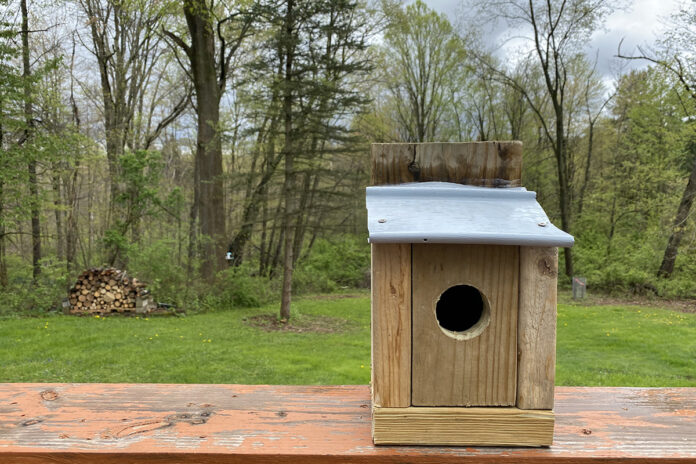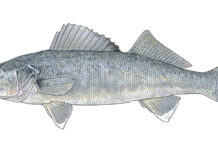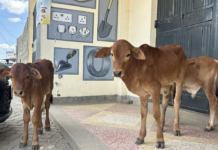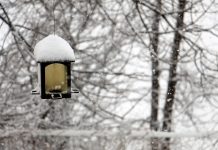
A couple of weekends ago, I helped build a 4×8-foot raised bed garden with a divider in the center. It turned out nice and we had enough scrap wood left over to build a simple nest box for the cavity-nesting songbirds that live in the backyard.
The species we’ve seen the most so far this year include bluebirds, chickadees, nuthatches, sparrows, robins, wrens and the occasional tufted titmouse or tree swallow.
The wood we had leftover built a small nest box big enough for a chickadee, wren, sparrow or tufted titmouse to call home. The simple design included a hinged door that lifts up from the bottom for easy cleaning between breeding seasons.
Now, we just have to find the right place to put it.
Planning a nest box
The first consideration when building a nesting box should be the types of birds you want to attract. We built our nest box big enough for the bird species that already frequent our backyard. However, if there’s a specific type of bird you want to attract, you’ll need to build a nest box big enough to accommodate that type of bird.

Below are the nest box requirements of some common backyard cavity nesters.
Eastern bluebird. Bluebirds need nest boxes that are 5x5x8 inches with a 1.5-inch hole centered 6 inches above the base of the nest box.
Chickadee. Chickadees need nest boxes that are 4×4 or 5×5 inches and 8 inches tall with a 1.1-inch hole centered 6 inches above the base of the nest box.
Wren. Wrens need nest boxes that are 4×4 or 4×6 inches and 8 inches tall with a 1-inch hole centered 6 inches above the base of the nest box.
Nuthatches. Nuthatches need nest boxes that are 4x4x10 inches with a 1.25-inch hole centered 7.5 inches above the base of the nest box.
Tree Swallows. Tree swallows need nest boxes that are 5x5x6 inches with a 1-inch hole centered 4 inches above the base of the nest box.
Tufted Titmouse. Tufted titmice need nest boxes that are 4x4x8 inches with a 1.25-inch hole.
The second consideration is making the interior accessible enough to clean it out between breeding seasons. We found the easiest way to do this was to screw only the top corners of the front piece of wood on, creating a hinge that lifts from the bottom when you push the top inward.

It’s important to clean your nest box between breeding seasons to remove any old nesting material and ensure harmful bacteria and contaminants are kept away from future residents. Always use gloves and wear a dust mask when cleaning out your nest box.
For more information on cleaning and maintaining nest boxes, read “How to prepare nest boxes for next season.”
Installing your nest box
After you’ve constructed your nest box to the specifications of the species you’re trying to attract, you’ll need to choose a location that’s easy for them to find.
Placing the nest box near areas that are already frequented by your target species or resources your target species uses increases the likelihood they will find it and use it. Many desirable cavity nesters prefer locations closer to woods or fields.
Below are the preferred nesting locations of some common backyard cavity nesters.
Eastern bluebird. Open, sunny areas facing a field or meadow.
Chickadee. Near small thickets and willow trees.
Wren. Hung in the lower branches of backyard trees.
Nuthatches. In or near mature woodlots.
Tree Swallows. In the open with partial to direct sunlight, within two miles of a lake or pond.
Tufted Titmouse. In or near mature woodlots.
Once you’ve chosen an ideal location, make sure you install your nest box at the correct height for the species you’re trying to attract. Different birds prefer to nest at different heights above the ground or water.
Below are the preferred nesting heights of some common backyard cavity nesters.
Eastern bluebird. 5-10 feet above the ground.
Chickadee. 4-8 feet above the ground.
Wren. 5-10 feet above the ground.
Nuthatches. 12-25 feet above the ground.
Tree Swallows. 5-8 feet above the ground.
Tufted Titmouse. 4-10 feet above the ground.










